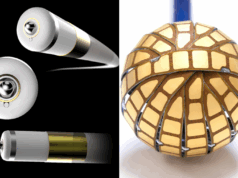
CardioFocus, developer of the HeartLight Endoscopic Ablation System (EAS) for the treatment of atrial fibrillation (AF), has announced new data showing pulmonary vein isolation (PVI) with its technology leads to a 99% acute success rate and up to an 82% chronic success rate at 12 months follow-up. In addition, the research indicates the HeartLight laser balloon technology resulted in improved long-term outcomes after a single procedure as compared with the cryothermal balloon catheter. The data were presented at the European Society of Cardiology (ESC) Congress 2012, in Munich, Germany.
Stephen Sagon, president and CEO of CardioFocus, said, “The presented outcomes data with the HeartLight system are particularly impressive because high chronic success rates have been elusive, let alone from a single procedure. We are encouraged by the continued performance of our system and its positive impact on patient care, especially as compared with alternative ablation technologies. As physicians hone their technique with endoscopically guided ablation, we anticipate further studies reinforcing these durable success rates.”
In the presented study titled, “Laser or Cryo? Prospective comparison of balloon based PVI technologies,” researchers from Cardioangiologisches Centrum Bethanien (CCB), Frankfurt, Germany, allocated 140 patients 1:1 to undergo catheter ablation with the HeartLight laser balloon or the cryothermal balloon (Medtronic Arctic Front). Acute isolation rates were comparable (98.9% vs. 99.6%, respectively). However, during 12-months follow-up, 37% of patients treated with the cryoballoon experienced AF recurrence vs. only 27% treated with a single HeartLight system procedure.
After repeat procedures with radiofrequency ablation as needed, both technologies demonstrated a chronic success rate of approximately 80%, though notably, the number of redo procedures was twice as high with the cryothermal balloon vs. HeartLight (22 vs. 11). Analysis of the veins themselves also demonstrated a 37% relative risk reduction of pulmonary vein reconnection using the HeartLight technique.
“We were interested in prospectively evaluating the outcomes achievable with HeartLight compared to the established cryothermal balloon catheter,” said Boris Schmidt, of CCB. “While we found the systems to have comparable safety and acute efficacy outcomes, the HeartLight system, in fact, led to a higher rate of longer-term freedom from AF after a single procedure. We look forward to further, multicentre study on this comparison.”
In the second presentation, titled “Pulmonary vein isolation for paroxysmal atrial fibrillation with the laser balloon”, researchers at Na Homolce Hospital in Prague, Czech Republic, highlighted outcomes of three years (2009–2011) of HeartLight cases at their centre. They found that at a mean 12 months follow-up, 82% of patients remained free from AF. In addition, acute PVI was documented at 100% for all of 2011, supporting the short learning curve and high reproducibility of the procedure.
“These data are a testament to our positive experiences with the HeartLight Endoscopic Ablation System since its incorporation into our practice over three years ago,” said Petr Neuzil, of Na Homolce Hospital. “Our research demonstrates the laser balloon PV isolation procedure to be safe, with acute results comparable to those of radiofrequency ablation procedures and longer-term results showing a compelling degree of continued isolation.”









